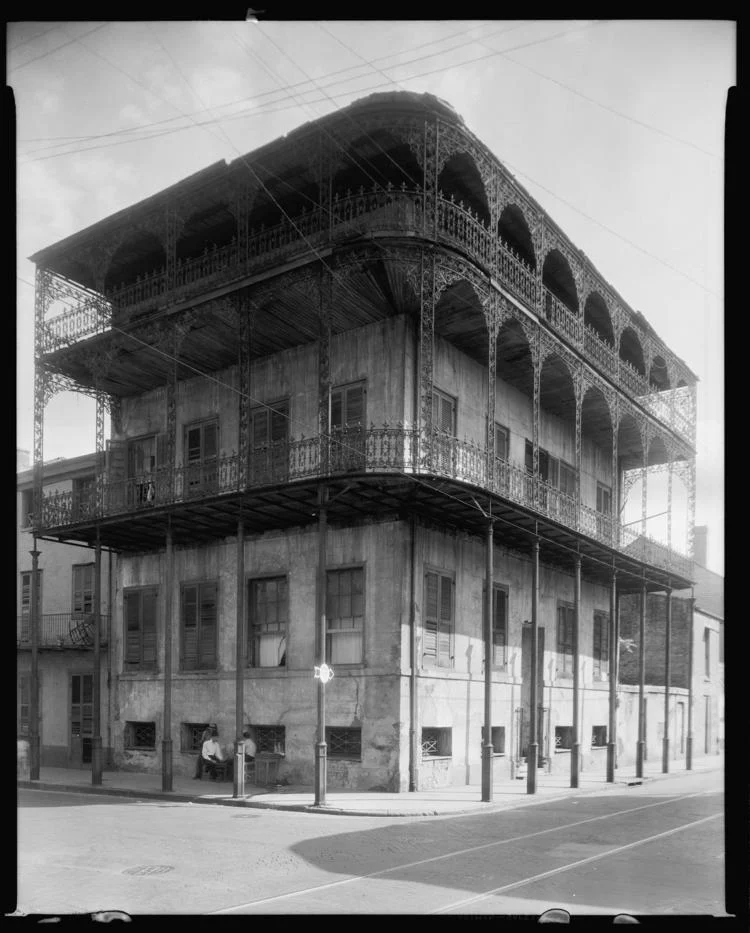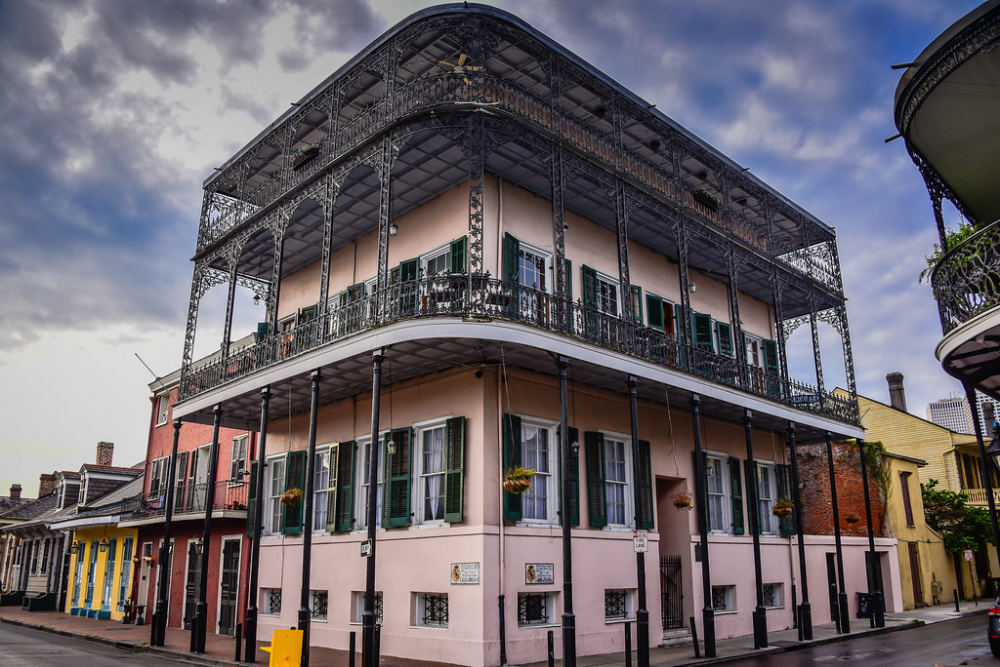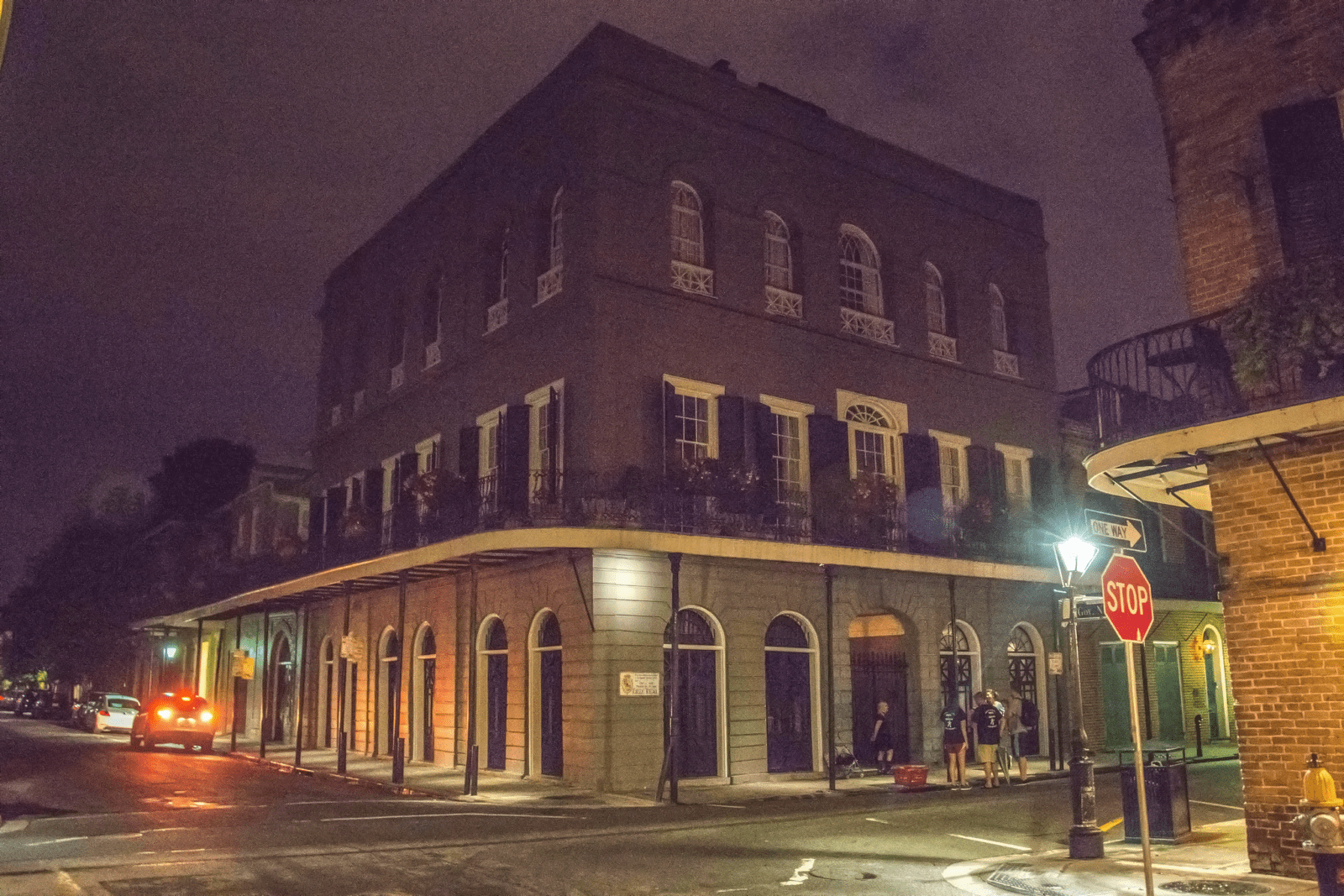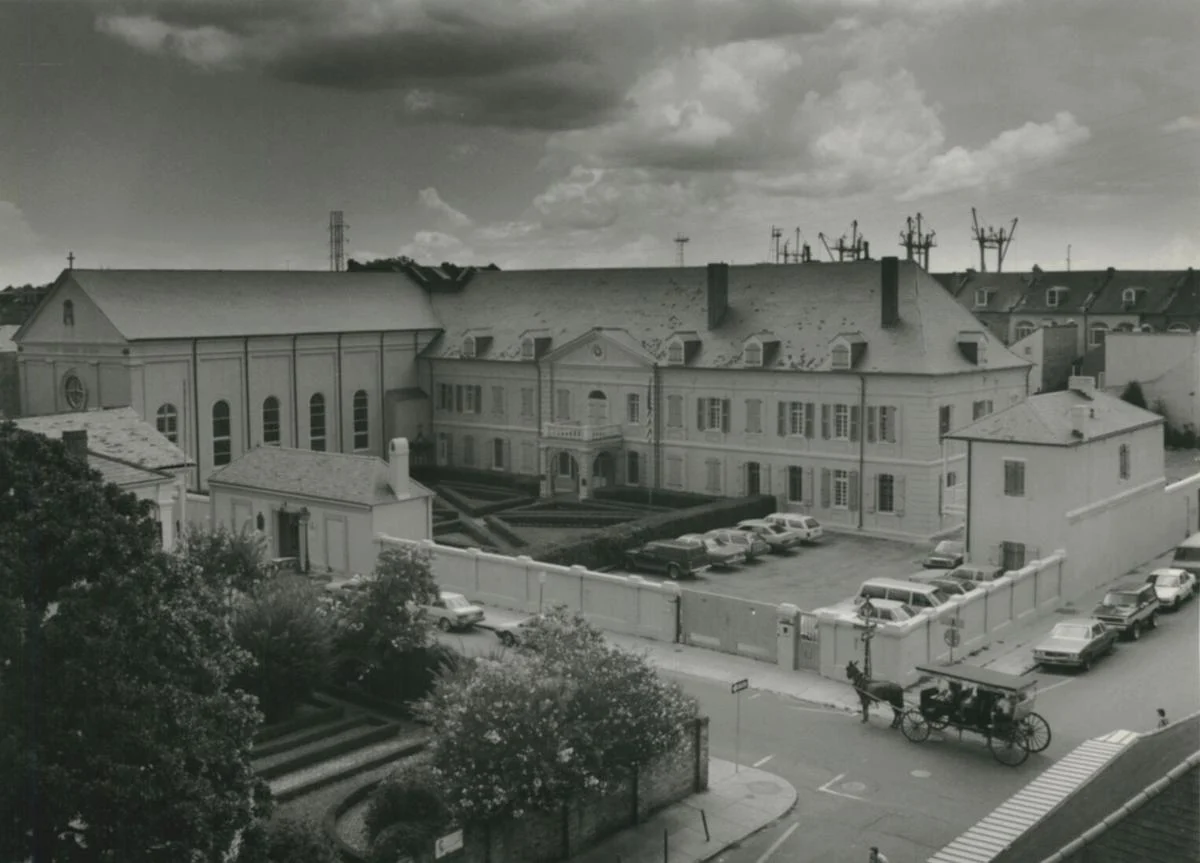The history of the infamous Sultan’s Palace dates back to 1836 when an opulent mansion was constructed on the corner of Dauphine Street and Orleans Street by a dentist named Joseph Coulon Gardette. Built in a Greek Revival architecture, the three-and-a-half-story building featured a half-basement along with a distinctive cast-iron balcony on the upper floors.
In 1839, the property was sold to local merchant Jean Baptiste LePretre. For the next four decade, LePretre proudly displayed his mansion, hosting countless parties for friends and luminaries visiting the city. The house was then known as Gardette-Lepretre mansion, after the last name of its first two owners.

Years later, the mansion was purchased by wealthy Turkish man who claimed to a sultan from the Middle East. Not long after the sale, the house was retrofitted with deadlocks and furnished with exotic decor. A man soon moved in with suitcases of gold and jewels, and an entourage of servants and harem. At night, the mansion would come alive with live Arabic music, Bakhoor (an incense from the Middle East), and dancing young women. The community soon nicknamed Gardette-Lepretre mansion as the “Sultan’s Palace”, or “The House of the Turk”. However, tragedy would go on to strike the magnificent house.
Massacre at the Sultan’s Palace
One day, a resident in the French Quarter was walking along Dauphine St when he spotted blood seeping from the mansion’s door down the steps to the sidewalk. The police were immediately called in. Upon opening the doors of the Sultan’s Palace, they were were greeted by a horrific scene: dozens of bodies lying face down in pools of blood; many of them were dismembered and disfigured beyond recognition. It was alleged that a total of 37 men and women were killed during the night of the massacre with no survivors.
A note found on the table reads: “This is what happen to traitors.”
Over at the mansion’s courtyard, the police found a freshly dug grave with a hand protruding from the ground. The body was later revealed to be the mysterious man who had moved in just weeks ago. He was believed to be have been tortured before being buried alive.
After months of investigations, the authorities at New Orleans discovered that the man who had moved into Sultan’s Palace was the brother of the Sultan. It is said that the brother was a fugitive who had committed treason in Turkey. Under the assistance of the Sultan, he fled to the United States and settled into the Sultan’s Palace. Unfortunately, he was betrayed by one of his aide, who leaked his whereabouts to the government of Turkey. The rest is history.
An alternate version of the story suggest that the Sultan had sent a group of assassins to New Orleans to murder his brother, removing any ‘competition’ that may stand in his way. That said, there were no official records of such a massacre happening in New Orleans at that time, neither were the true identity of the Sultan and his brother made known.
The building was abandoned till the 1930s when it was renovated and divided into the Saba Apartments. It was later occupied by the New Orleans Academy of Art but was forced to close down after most of its students were drafted during World War II. Once again, the building languished unmaintained in a corner of Dauphine Street.

The property was salvaged by real-estate investors Frank D’Amico and Anthony Vesich Jr in 1966, who sought to restore the historic property to its former pristine state and convert it into apartments.
In 2013, the Sultan’s Palace was put up for sale at a reported price of $2.65 million. Today, Sultan’s Palace is a private residence with six independent apartments for long-term rentals. As such, the property is strictly off limits to tourists.
Reported Hauntings at the Sultan’s Palace
Over the years, the Sultan’s Palace has gained notoriety as one of the most haunted places in the French Quarter.
While current owner Nina Neivens believes that the massacre was nothing more than an urban legend, she believes that something unearthly exists in this property. On many occasions, keys to the apartments would disappear and never show up again.
Tenants who have lived in the building have also reported many paranormal activities such as dark shadows and disembodied voices of women in the middle of the night. Phantom music can also be heard throughout the house, although the source of it can never be found. The apparition of a man, believed to be the brother who was assassinated, can also be seem roaming the common areas of the mansion.
What Is the Address of the Sultan’s Palace in New Orleans?
The address of Sultan’s Palace is 716 Dauphine Street, New Orleans, LA 70116. The Google Map coordinates of the mansion can be found here.
Sultan’s Palace is not to be confused with the building across the street, 715 Dauphine Street. While the two share a similar architecture, the Sultan’s Palace is a three-and-a-half story building with balconies on the second and third floor. In contrast, the building across the street is two story high and has a balcony only on the second floor.
Sultan’s palace is also a short walk from other notable haunted places in the French Quarters including the Lalaurie Mansion, the Lafitte’s Blacksmith Shop Bar, and Andrew Jackson Hotel.



